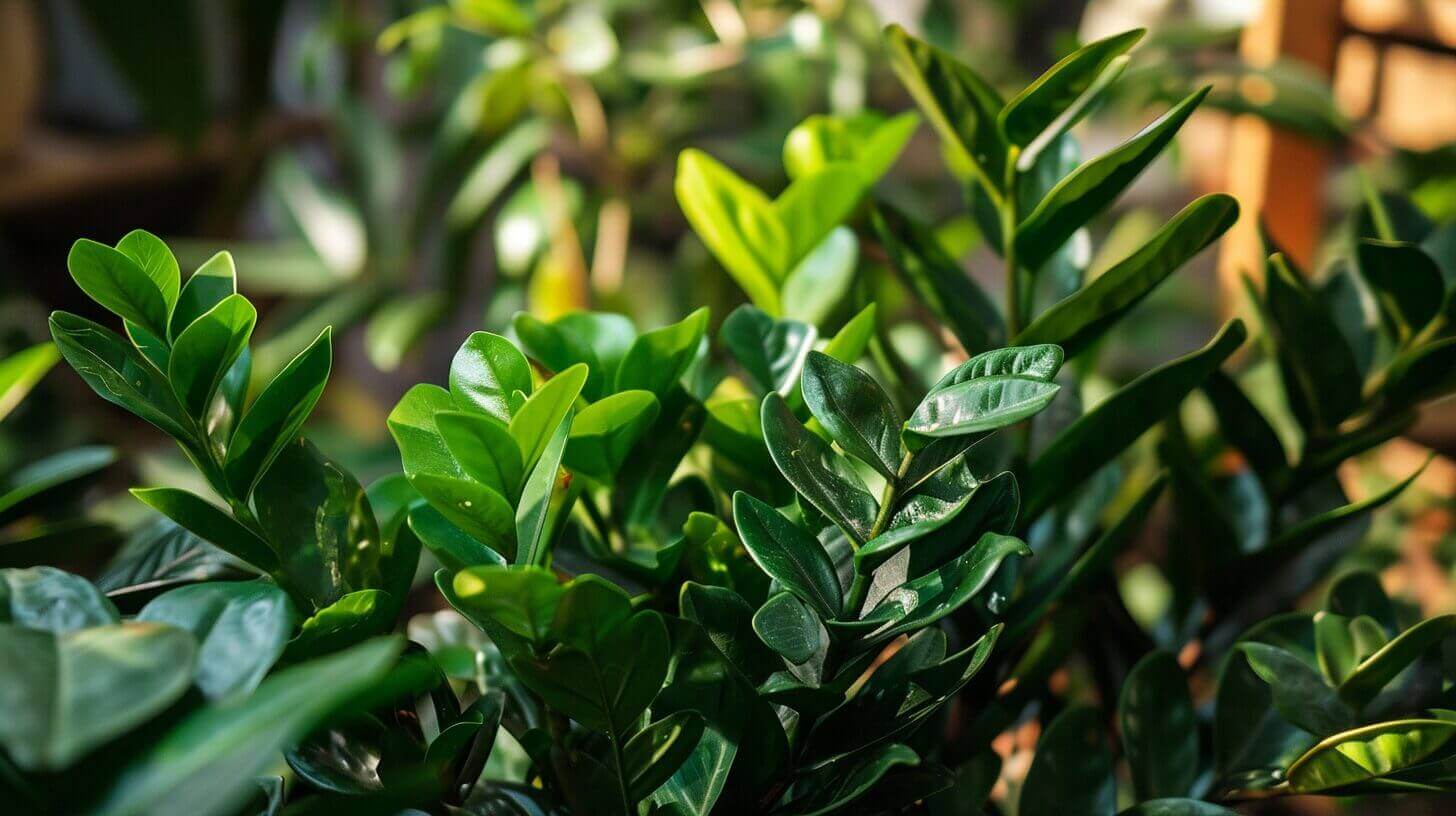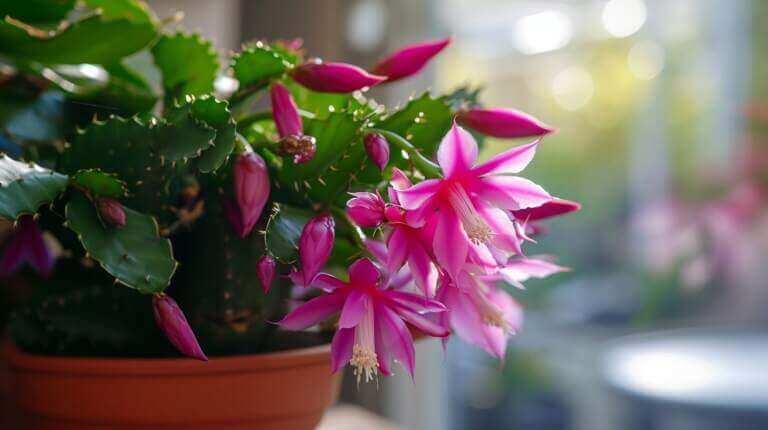How and When to Prune ZZ Plant: A Simple Step-by-Step Guide To Pruning Your ZZ Plants
Key Takeaways
- ZZ plants thrive in low light and tolerate neglect.yy
- Pruning promotes healthy growth and maintains the plant’s appearance.
- Prune during spring or early summer when the plant is actively growing.
- Avoid over-pruning due to the slow growth rate of ZZ plants.
Understanding the Growth Pattern of a ZZ Plant
The growth pattern of a ZZ plant can be better understood by observing the development of its rhizomes and leaflets over time. ZZ plants, scientifically known as Zamioculcas zamiifolia, are popular houseplants due to their ability to thrive in low light and tolerate neglect. Understanding their growth pattern is essential for successful ZZ plant care and propagation.
The rhizomes of a ZZ plant serve as its underground stems, storing nutrients and water. As the plant grows, these rhizomes elongate and produce new leaflets. The leaflets emerge from the rhizomes in a symmetrical pattern, creating the characteristic feather-like appearance of the plant. The leaves are dark green and glossy, which helps the plant absorb as much light as possible.
To care for a ZZ plant, it is important to provide it with well-draining soil and moderate watering. Overwatering can lead to root rot, while underwatering can cause the leaves to yellow and droop. ZZ plants can also be propagated through division, by carefully separating the rhizomes and replanting them in separate pots.
Understanding the growth pattern of a ZZ plant is crucial for providing it with the right conditions and properly propagating it. With proper care and attention, ZZ plants can thrive and bring beauty to any indoor space.
Essential Tools for Pruning a ZZ Plant
Pruning a ZZ plant effectively requires the use of specialized pruning shears to carefully remove dead or damaged parts of the plant. Pruning is an essential part of ZZ plant care and helps to promote healthy growth and maintain the plant’s overall appearance. However, it is important to follow proper pruning techniques to avoid common mistakes that can harm the plant.
Firstly, it is crucial to identify dead or damaged parts of the plant before pruning. Look for yellow or brown leaves, stems that are mushy or blackened, or any signs of disease or pests. Once identified, use sharp pruning shears to make clean cuts just above the node or joint where the leaf or stem meets the main stem of the plant. This helps promote new growth and prevents the spread of diseases.
One common mistake to avoid is over-pruning. ZZ plants are slow-growing, so excessive pruning can stunt their growth. Only prune when necessary, such as to remove dead or damaged parts or to shape the plant. Additionally, avoid pruning during the winter months when the plant is dormant.
Identifying the Best Time to Prune Your ZZ Plant
Ideally, accurately identifying the optimal time to prune your ZZ plant is crucial for ensuring its health and promoting vigorous growth. Pruning at the right time allows you to remove dead or damaged foliage, maintain a desired shape, and encourage new growth. Here are the best pruning techniques and signs of a healthy ZZ plant:
- Timing: Prune your ZZ plant during the spring or early summer when it is actively growing. Avoid pruning during winter when growth slows down.
- Dead or damaged foliage: Look for yellow or brown leaves and remove them at their base. This helps prevent the spread of diseases and allows the plant to focus its energy on healthy parts.
- Shaping: If you want to maintain a specific shape, prune the stems back to the desired length. This will encourage branching and denser growth.
- Propagation: Pruning can also be a great opportunity for propagation. Cut healthy stem sections and place them in water or soil to develop new plants.
Signs of a healthy ZZ plant include glossy, dark green leaves, upright stems, and minimal leaf drop. Regular pruning, along with proper watering and lighting, will ensure your ZZ plant thrives and remains a beautiful addition to your indoor space.
Step-by-Step Guide to Pruning a ZZ Plant
A step-by-step guide is essential for effectively pruning a ZZ plant and promoting its overall health and growth. Pruning is a crucial task that helps maintain the shape of the plant and encourages new growth. By removing dead or damaged leaves, you can improve the ZZ plant’s appearance and prevent the spread of diseases. However, improper pruning techniques can harm the plant and hinder its growth.
To start, gather the necessary tools such as pruning shears or scissors, clean them with rubbing alcohol to prevent the transmission of diseases, and wear gloves to protect your hands. Inspect the plant and identify any dead, damaged, or yellowing leaves that need to be pruned. Cut the leaves as close to the base as possible, without damaging the healthy foliage. Avoid cutting too many leaves at once, as this can shock the plant.
Common mistakes to avoid during pruning include cutting too close to the base, which can damage the healthy foliage, and removing too many leaves at once, which can stress the plant. It’s important to remember that ZZ plants have a slow growth rate, so be patient and only prune when necessary.
Tips for Maintaining the Health of Your Pruned ZZ Plant
After pruning your ZZ plant, it is important to consistently water and fertilize it in order to maintain its health. Here are some tips to help you effectively care for your pruned ZZ plant:
- Avoid overwatering: ZZ plants are sensitive to excessive moisture, so make sure to water them only when the top inch of soil feels dry. Overwatering can lead to root rot and other fungal diseases.
- Provide adequate light: ZZ plants thrive in bright, indirect light. Place your pruned plant near a window where it can receive filtered sunlight. Avoid placing it in direct sunlight, as this can scorch the leaves.
- Promote new growth: To encourage new growth after pruning, apply a balanced houseplant fertilizer every four to six weeks during the growing season. This will provide the necessary nutrients for healthy foliage.
- Monitor for pests: ZZ plants are generally resistant to pests, but occasionally, they can be susceptible to mealybugs and spider mites. Regularly inspect your plant for any signs of infestation and treat them promptly using an appropriate insecticide.
Frequently Asked Questions
Can I Repot My ZZ Plant at the Same Time as Pruning It?
When considering repotting your ZZ plant, it is advisable to separate the tasks of repotting and pruning. Repotting the plant and pruning it are two separate processes that require different approaches. Repotting the ZZ plant involves carefully removing it from its current container and transferring it into a new one, incorporating essential steps for zz plant repotting. Pruning, on the other hand, involves trimming and removing any damaged or overgrown stems or leaves to maintain the plant’s health and appearance. It is best to tackle these tasks separately to ensure the well-being of your ZZ plant.
What is ZZ plant pruning?
ZZ plant pruning is the process of trimming the leaves and stems of a ZZ plant to keep the plant healthy and looking its best. It involves using clean and sharp pruning shears to cut back unwanted or overgrown parts of the plant.
How does a ZZ plant like to be pruned?
ZZ plants prefer to be pruned in a way that promotes their natural shape and size. This usually involves cutting back leggy stems and removing any dead or dying leaves.
How does a ZZ plant grow after pruning?
After pruning, a ZZ plant may produce new growth from the base of the plant. This helps to keep your ZZ plant healthy and encourages a fuller appearance.
What is the correct way of cutting a ZZ plant during pruning?
When cutting a ZZ plant during pruning, it’s important to cut the stem at an angle, just above a leaf node. This encourages new growth and helps to keep your plant healthy.
Why is my ZZ plant leggy?
A ZZ plant can become leggy if it’s not getting enough light or if it’s overdue for pruning. Cutting back leggy stems can help improve the plant’s appearance.
How do I care for ZZ plant stems?
Care for ZZ plant stems involves providing enough light, watering appropriately, and pruning as needed to maintain a healthy and attractive appearance.
What does a ZZ plant need to grow well?
A ZZ plant needs adequate light, regular watering, and occasional fertilization to grow well. Pruning can also help promote bushier growth.
How do I trim a ZZ plant?
To trim a ZZ plant, use clean and sharp pruning shears to cut back any leggy stems or remove dead leaves. Always make cuts at an angle just above a leaf node.
How can I keep my ZZ plant healthy?
To keep your ZZ plant healthy, provide it with enough light, water it appropriately, fertilize it occasionally, and prune it as needed to maintain its shape and size.
Should I Prune My ZZ Plant Before or After Watering It?
When it comes to watering ZZ plants correctly, the ideal approach is to prune them before watering. Pruning allows you to remove any dead or yellowing leaves, promoting healthier growth. After pruning, watering your ZZ plant will allow it to absorb moisture more efficiently, ensuring its overall well-being.
When should I prune my ZZ plant?
You may want to prune your ZZ plant if it’s becoming leggy or overgrown, or if there are dead or dying leaves that need to be removed.
What are some simple steps for pruning a ZZ Plant?
Simple steps for pruning a ZZ Plant include cleaning your shears with rubbing alcohol, identifying which parts of the plant need to be pruned, making clean cuts at an angle just above leaf nodes, and disposing of the cut material.







